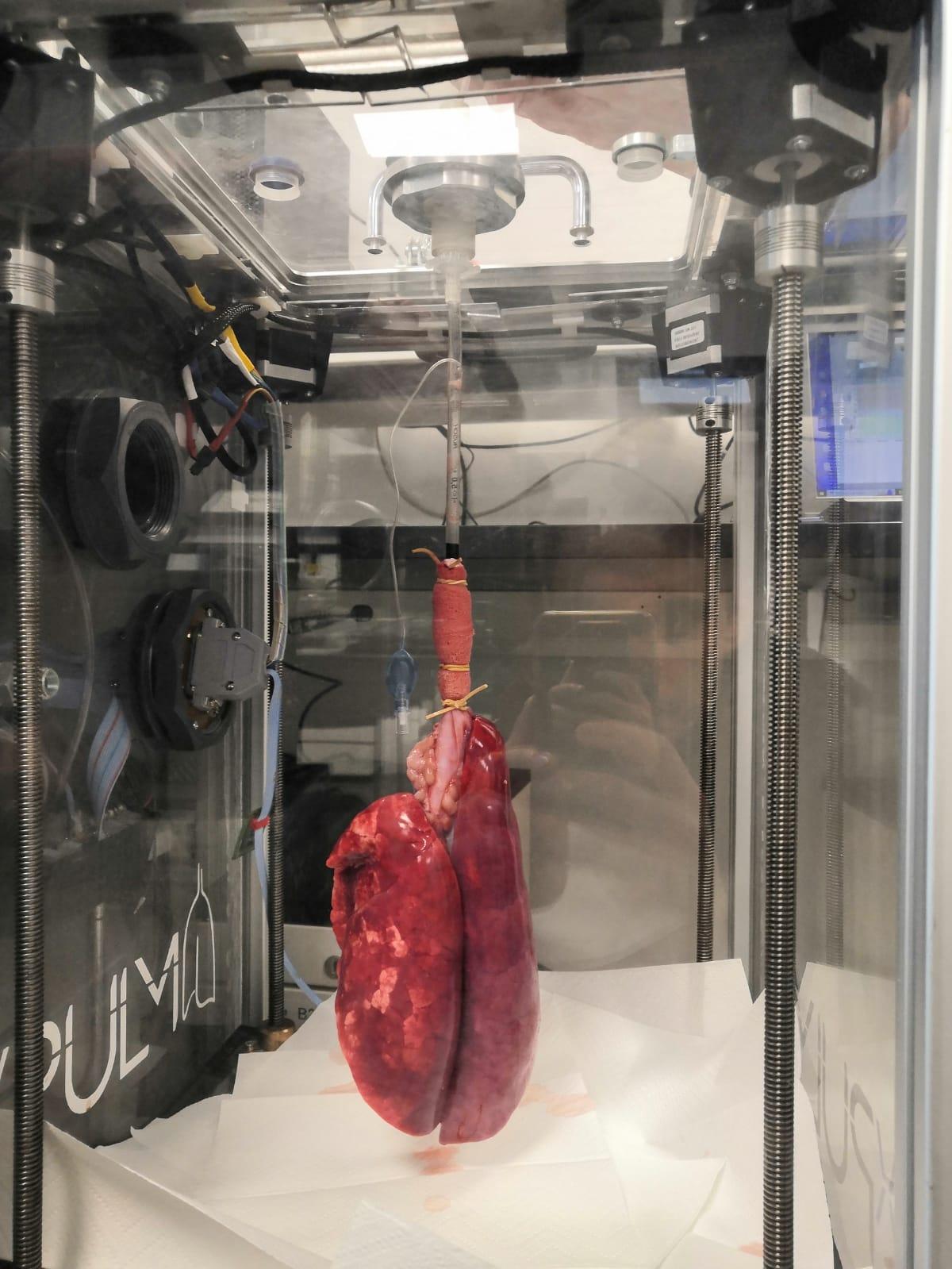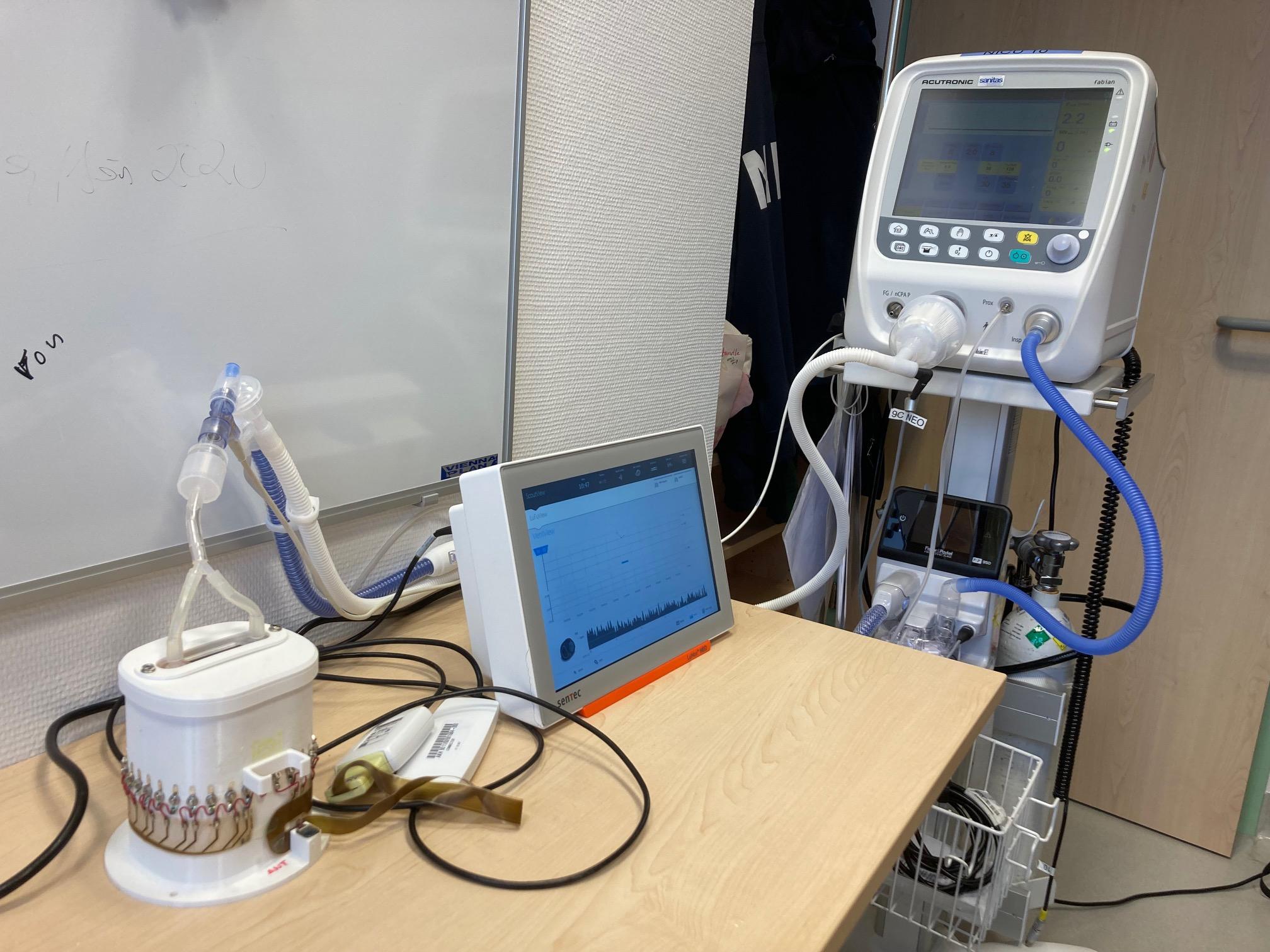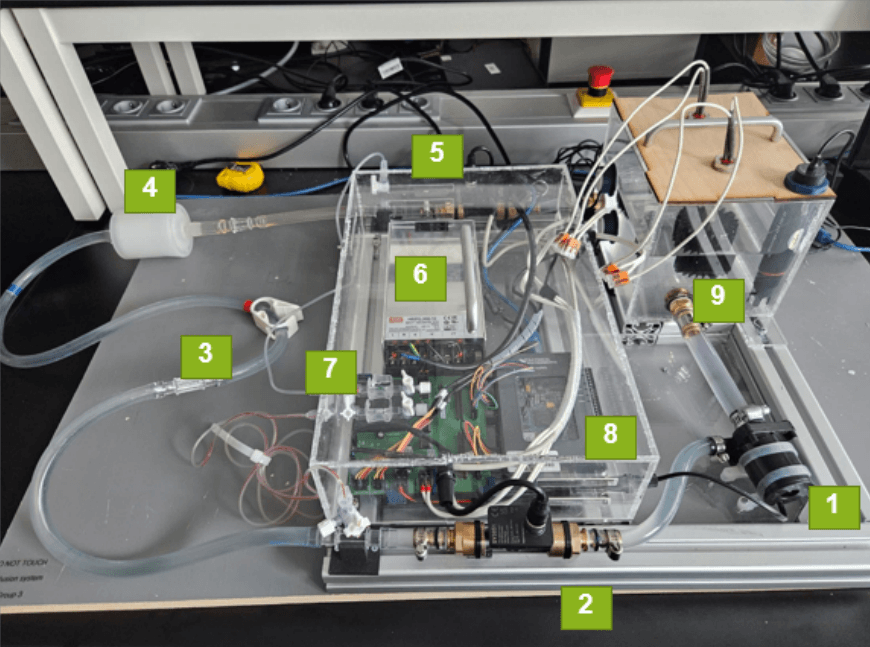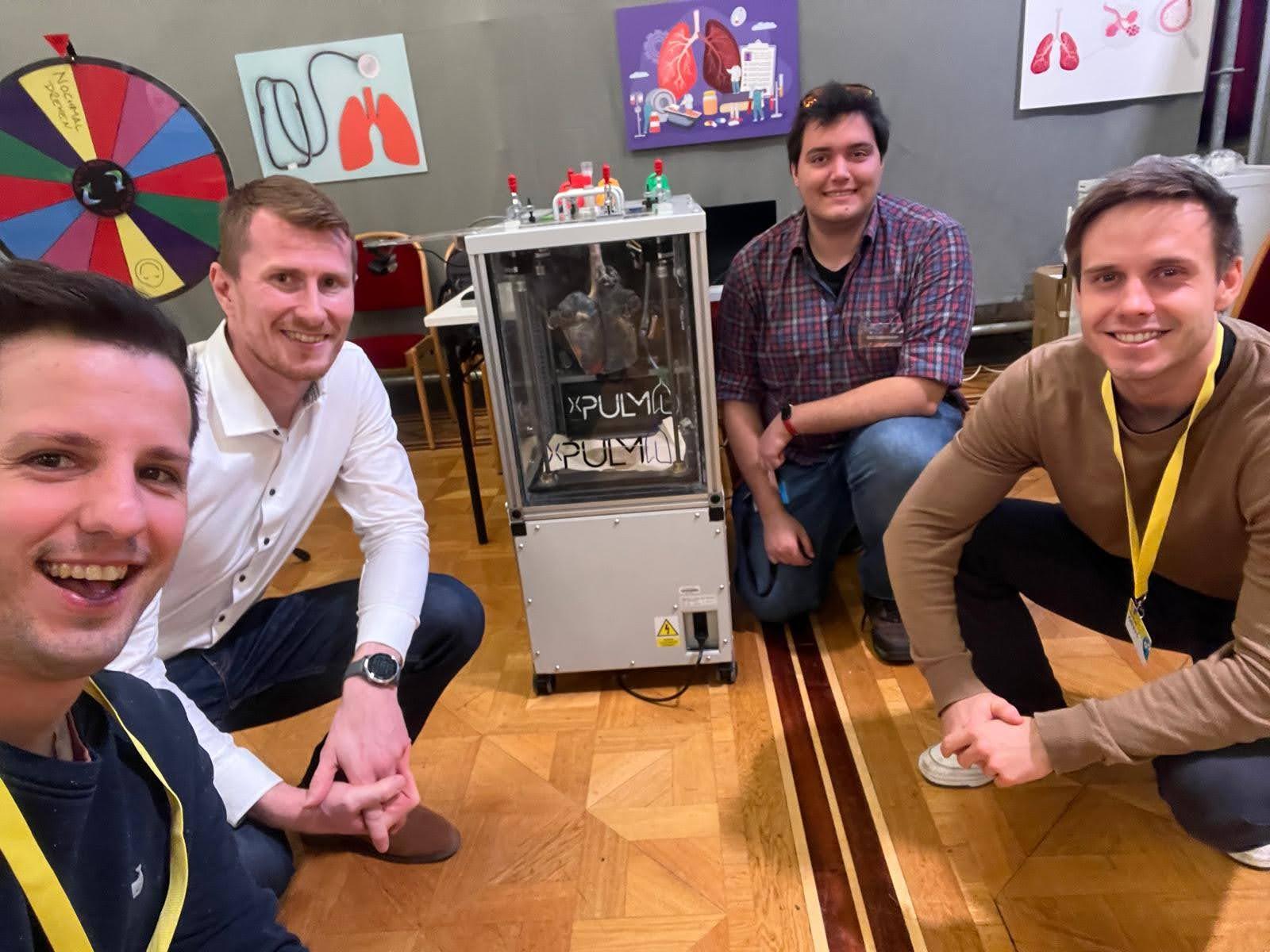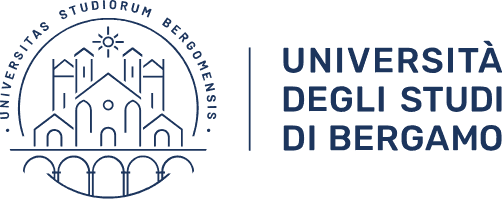Respiration Technology
ABOUT THE RESPIRATION LABORATORY
The overarching aim of the Respiration Laboratory is to model and simulate both the human respiratory and cardiovascular systems for diverse applications in teaching and research. This includes detailed representations of the physiological and anatomical aspects of the respiratory system, along with fundamental simulations of the cardiovascular system.
Ultimately, we aim to gain a deeper understanding of the functioning of these vital physiological systems and to develop innovative approaches for testing and evaluating treatments for respiratory diseases and conditions. Furthermore, it aims to develop educational tools to aid in the teaching of cardiovascular system concepts. x
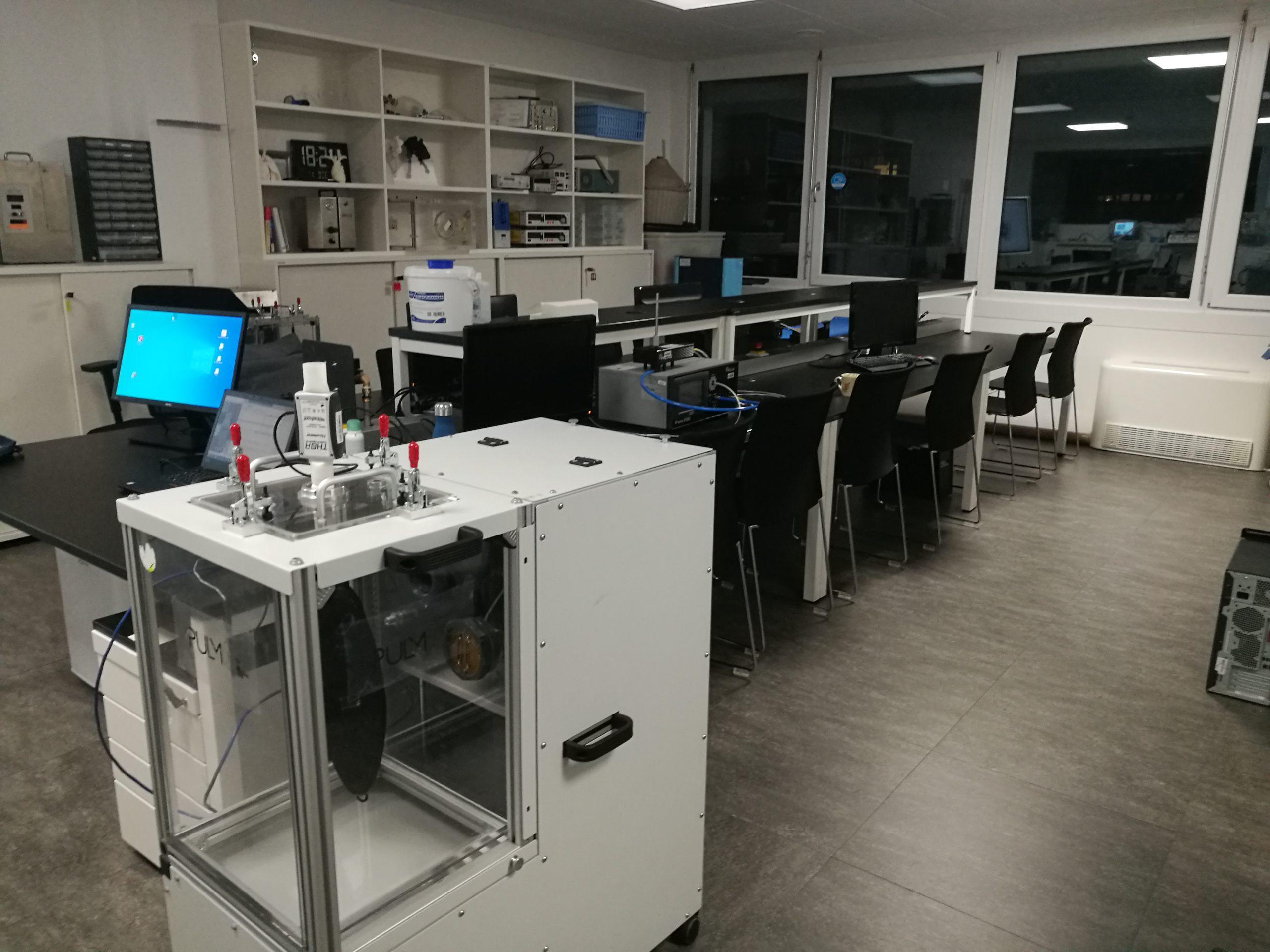
Focus Areas
Lung Simulation and Recruitment
At FHTW we are proud to be at the forefront of respiratory research with the development of the xPULM™ electro-mechanical lung simulator. This innovative tool bridges the gap between complex in-vivo models and traditional simulation methods. The xPULM™ offers a safe, cost-effective, and ethical alternative (3R principles) by realistically replicating the function of a human lung during breathing. The simulator achieves this through a combination of electrical, mechanical and in-silico elements, along with the potential to incorporate ex-vivo lung tissue. By utilizing lung tissue sourced from larger animals such as pigs for adult simulations, or smaller animals like rabbits or sheep for neonatal simulations, the xPULM™ ensures adaptability across a spectrum of research needs. This adaptability allows researchers to precisely control breathing parameters like tidal volume and frequency, while achieving highly reproducible results. The xPULM™ paves the way for significant advancements in medical device development, therapeutic strategies, and a more refined understanding of lung mechanics.
Simulation of adult breathing with ex-vivo porcine lungs
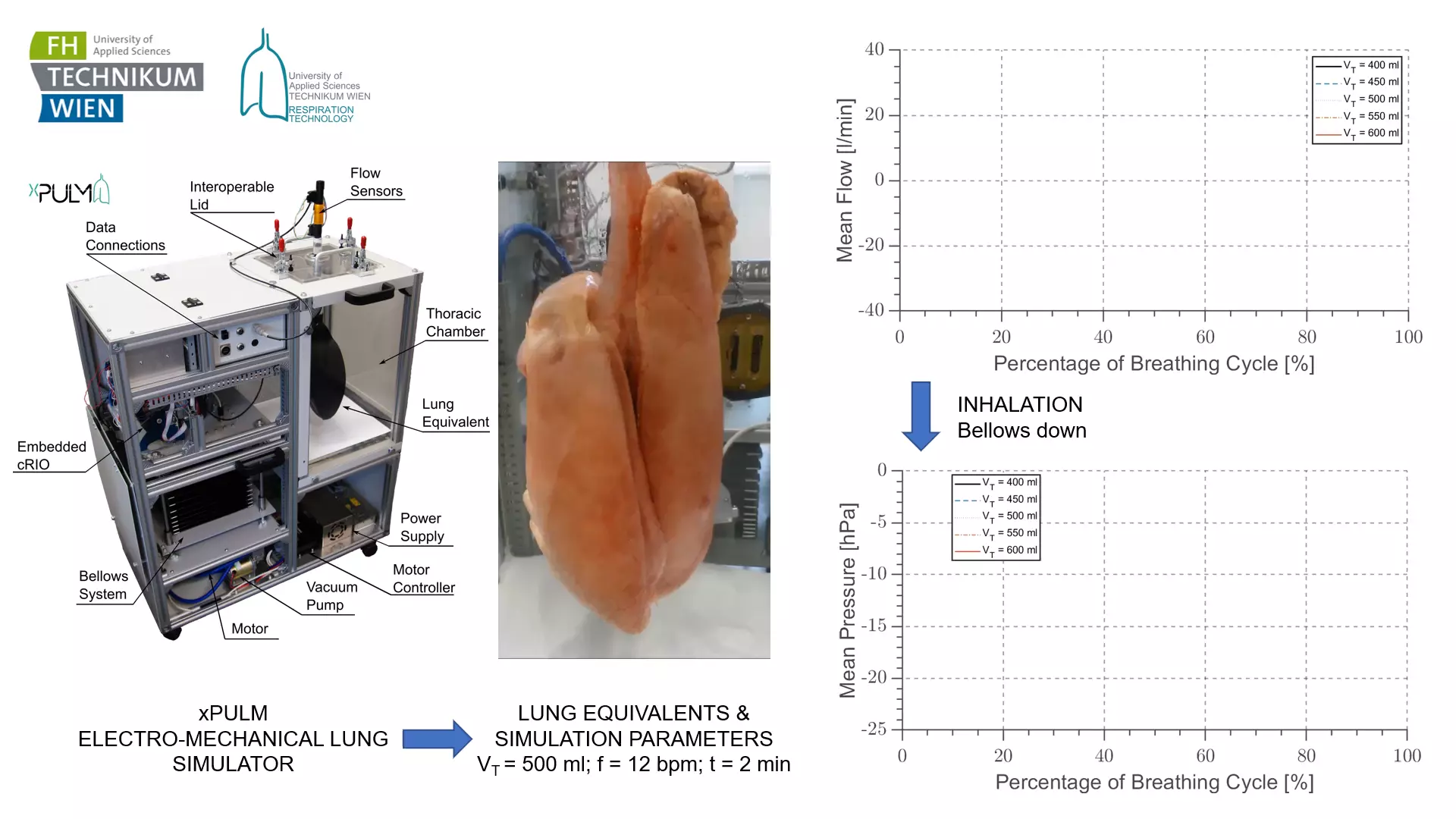
Simulation of paediatric and neonatal breathing with small animal and artificial lungs
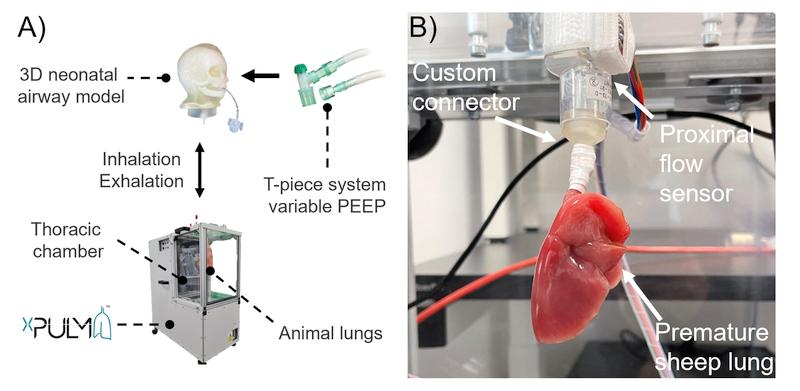
Electrical Impedance Tomography
Our work with Electrical Impedance Tomography (EIT) centers on advancing non-invasive imaging techniques to monitor lung function and other physiological processes in real time. EIT provides a dynamic view of ventilation and perfusion, offering insights that traditional methods may not capture as readily.
As a bedside tool, EIT has the potential to support clinical decision-making, guide personalized treatment strategies, and improve outcomes through continuous monitoring. In research and development, it enables the exploration of new approaches to understanding complex physiological systems.
We are committed to developing and applying EIT in ways that bridge the gap between innovation and practical use, working with clinicians, scientists, and technology partners to expand its role in healthcare.
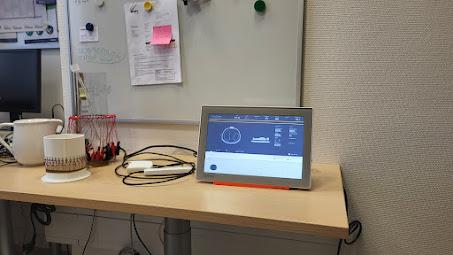
Computational Fluid Dynamics (CFD)
Our research utilizes Computational Fluid Dynamics (CFD) to gain a deep understanding of airflow, pressure distribution, and material stress within detailed models of the respiratory system. These models, often segmented from CT scans, allow us to focus on specific regions, particularly the upper airways, to investigate particle deposition with high accuracy. CFD offers a non-invasive alternative to traditional methods, providing valuable insights into how factors like breathing patterns and particle size influence where inhaled particles land. By comprehensively analyzing flow, pressure, and stress, we can optimize particle delivery, ultimately paving the way for improved inhaled therapies for respiratory diseases.
Meshed Models

Example of Results
Velocity & Pressure Contours

Particle Deposition & Movement

Aerosol Technologies
In the area of aerosol technologies, we offer a versatile array of devices tailored to address specific research inquiries. Our laboratory boasts a comprehensive selection of both solid and liquid aerosol generators, with capabilities of delivering mono- or polydisperse aerosols based on the study’s requirements. Additionally, we utilize a diverse range of medical aerosol delivery devices, including dry powder inhalers (DPIs), pressurized metered dose inhalers (pMDI), and medical nebulizers employing various working principles.
To complement our aerosol generation capabilities, we employ state-of-the-art optical aerosol spectrometers for continuous characterization of the generated aerosols in terms of particle size distribution (PSD) and particle number concentration (PNC). These devices integrate with our 3D airway models, the xPULM simulator, and other components through custom connectors and measurement setups, enabling comprehensive aerosol studies.

3D Models & Printing
The foundation of our 3D modelling and printing capabilities lies in our collaboration with clinical partners, leveraging CT/MT/Ultrasound imaging studies to capture the intricate geometry of the human upper respiratory tract. These images undergo preprocessing and quality assessment checks to ensure accuracy and reliability. Utilizing segmentation techniques, we extract the upper airways, spanning from oral and nasal cavities to the first bifurcation, resulting in highly detailed 3D models. These models are then postprocessed and can be employed for a variety of purposes, including 3D printing and computational fluid dynamics (CFD) simulations. Our 3D printed models find application in diverse studies, such as medical aerosol inhalation research, and can seamlessly integrate into our xPULM simulator or be utilized independently to advance our understanding of respiratory physiology and pathology.

Segmentation & Reconstruction

Manufacturing

Education & Outreach
Our education and outreach efforts are dedicated to sharing knowledge, fostering curiosity, and building meaningful connections with diverse audiences. Through workshops, training opportunities, and accessible resources, we provide support for learners of all ages and backgrounds.
By combining education with community engagement, we aim to encourage collaboration, reduce barriers, and promote lifelong learning. Our programs are designed to create welcoming spaces where ideas can grow and individuals can gain the skills and confidence to make a lasting impact.
We invite individuals, schools, and organizations to connect with us and take part in shaping stronger, more informed communities.
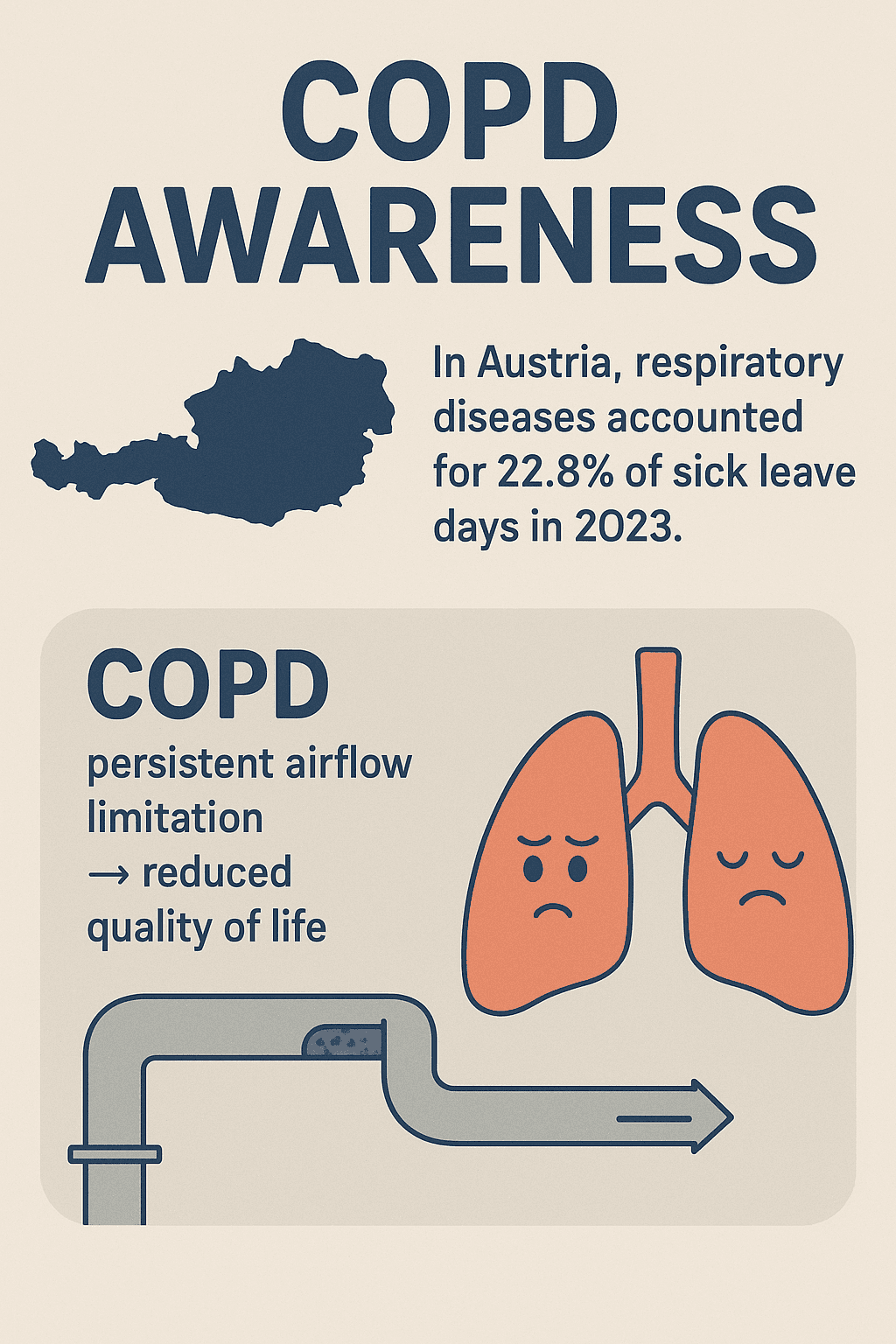
Lung Perfusion and Cardiac Mock Loops
Our work with lung perfusion and cardiac mock loops focuses on creating reliable platforms for research, testing, and training. These systems are designed to replicate physiological conditions, allowing for the study of circulation, ventilation, and device performance in a controlled environment.
By providing a safe and adaptable setting, mock loop technologies make it possible to evaluate new medical devices, refine clinical techniques, and advance our understanding of cardiopulmonary function. These tools serve as valuable bridges between experimental research and real-world applications, helping to reduce risks and accelerate innovation.
We collaborate with researchers, clinicians, and industry partners to ensure that our systems support meaningful discoveries and practical solutions for improving patient care.
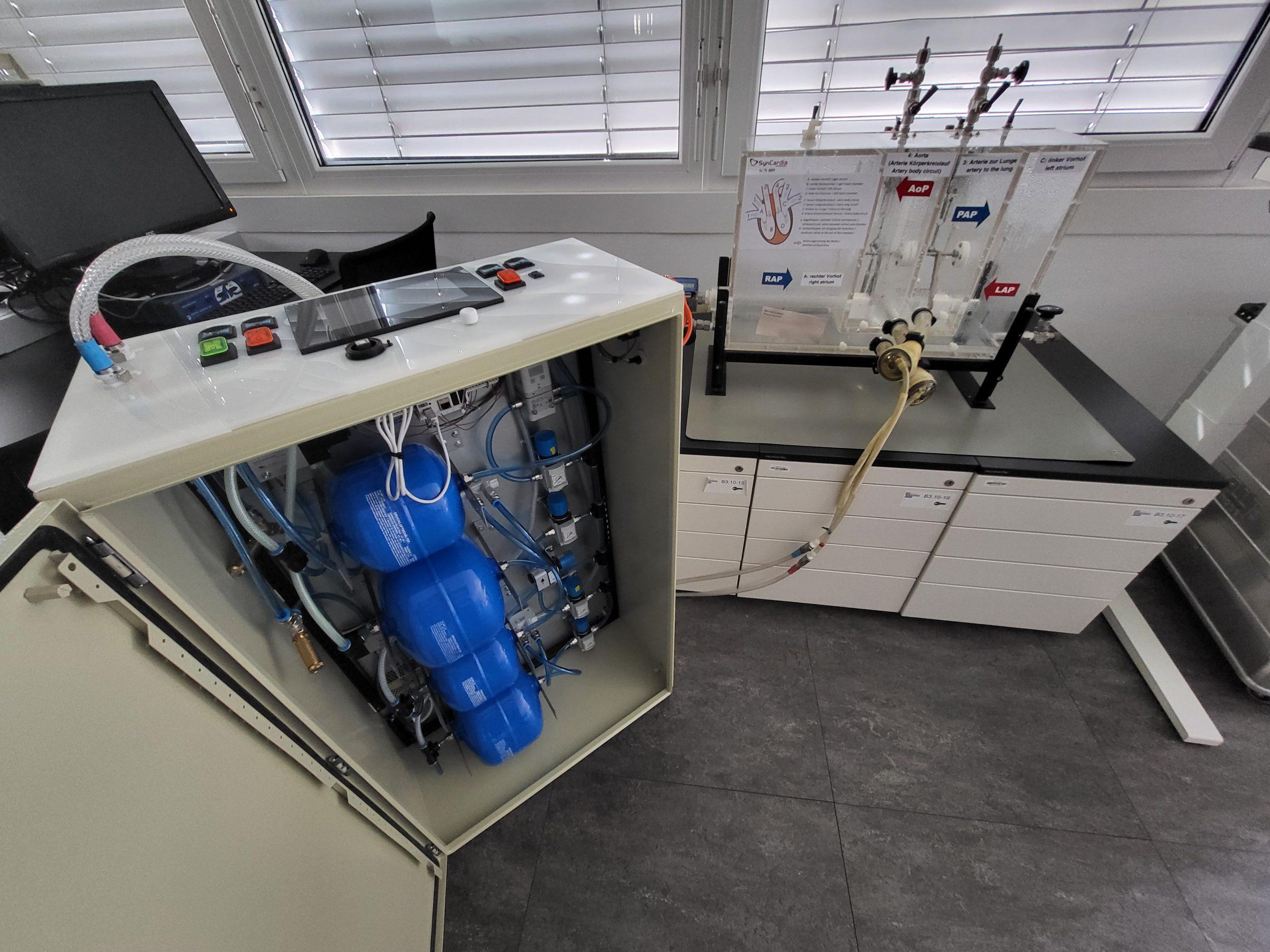
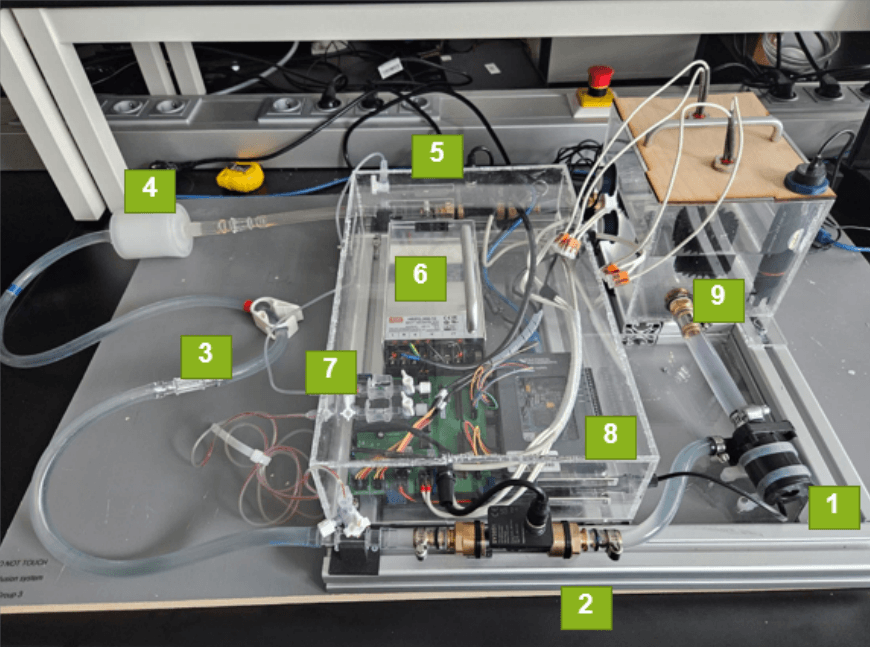
A simplified ex-vivo lung perfusion system consists of a centrifugal pump (1), two flow sensors (2,5), a clamp for simulating a resistance (3), a filter (4), a power supply (6), a PCB which includes all the electronics for signal adjustment and the two pressure sensors (7), the myRIO controller (8) and a reservoir including two level sensors, a pH sensor and the heating system (9).
Publications
- R. Pasteka, L. Hufnagl, V. Vodenicharov, A. Blessing, A. Berger, M.Wagner and T. Werther (2025)
- Pediatric Pulmonology, vol. 60
- R. Pasteka, L. Hufnagl, M. Forjan, A. Berger, T. Werther, and M. Wagner (2024)
- Acta Paediatr., vol. 113, no. 4, pp. 722–730
- V. Vodenicharov and R. Pasteka (2023)
- Curr. Dir. Biomed. Eng., vol. 9, no. 2, pp. 27–30
- R. Pasteka, L. A. Schöllbauer, J. P. Santos da Costa, R. Kolar, and M. Forjan (2022)
- Pharmaceutics, vol. 14, no. 3, p. 500
- R. Pasteka, J. P. Santos da Costa, N. Barros, R. Kolar, and M. Forjan (2021)
- Appl. Sci. (Basel), vol. 11, no. 9, p. 3745
- R. Pasteka, M. Forjan, S. Sauermann, and A. Drauschke (2019)
- Scientific Reports, Bd. 9, Nr. 1
- T. Steiner, M. Forjan, T. Kopp, Z. Bureš, and A. Drauschke (2012)
- Biomed. Tech. (Berl.), vol. 57, no. SI-1 Track-O
- R. Pasteka, J.P. Santos da Costa, and M. Forjan (2021)
- 8th European Medical and Biological Engineering Conference (EMBEC)
- R. Pasteka, and M. Forjan (2019)
- 41st Annual International Conference of the IEEE Engineering in Medicine and Biology Society (EMBC)
- M. Forjan, V. David, M. Wagner, L. Dolesch, M. Lechner, and S. Sauermann (2019)
- 41st Annual International Conference of the IEEE Engineering in Medicine and Biology Society (EMBC)
- R. Pasteka, M. Forjan, and A. Drauschke (2018)
- 15th IFAC Conference on Programmable Devices and Embedded Systems, PDeS 2018
- R. Pasteka, and M. Forjan (2017)
- Joint Conference of the European Medical and Biological Engineering Conference (EMBEC) and the Nordic-Baltic Conference on Biomedical Engineering and Medical Physics (NBC)
- V. David, M. Forjan, T. Steiner, Z. Bureš, and A. Drauschke (2013)
- 12th IFAC Conference on Programmable Devices and Embedded Systems, PDeS 2013
- T. Steiner, M. Forjan, L. Traxler, Z. Bureš, and A. Drauschke (2012)
- 15th International Conference on Mechatronics, MECHATRONIKA 2012
- M. Forjan, K. Stiglbrunner, T. Steiner, Z. Bureš, and A. Drauschke (2012)
- 11th IFAC/IEEE International Conference on Programmable Devices and Embedded Systems, PDeS 2012
- M. Forjan, K. Stiglbrunner, Z. Bureš, and A. Drauschke (2011)
- 6th IASTED International Conference on Biomechanics, BioMech 2011
- J. Sucháček (2024)
- Master Thesis - FH Technikum Wien
- T. Dobrovolná (2023)
- Master Thesis - FH Technikum Wien
- N. Khoss (2023)
- Master Thesis - FH Technikum Wien
- M. Pospíšil (2022)
- Master Thesis - FH Technikum Wien
- O. Kozynets (2019)
- Master Thesis - FH Technikum Wien
- Bachelor & Master Thesis - FH Technikum Wien
Research Projects
In the realm of respiratory research, various activities are undertaken, including electro-mechanical simulation of both adult and pediatric lungs, aerosol generation and measurement, Computational simulations, and ex-vivo lung perfusion.
Collaborations
Student Projects & Internships
We offer students the opportunity to join our Respiration Lab for internships and research projects. Whether you’re looking to gain practical experience or complete a thesis, you’re welcome to contribute to our ongoing research and innovation in respiratory science.
Below, you can read what past interns have said about their experience.
Team
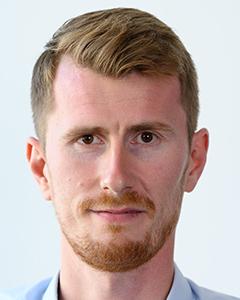
Senior Lecturer/Researcher

Lecturer/Researcher

Lecturer/Researcher
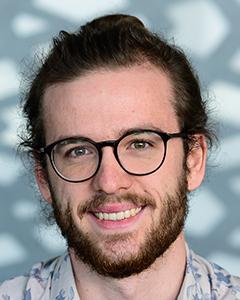
Junior Lecturer/Researcher

Senior Lecturer/Researcher

Managing Director Technikum Wien Gmbh
Contact

